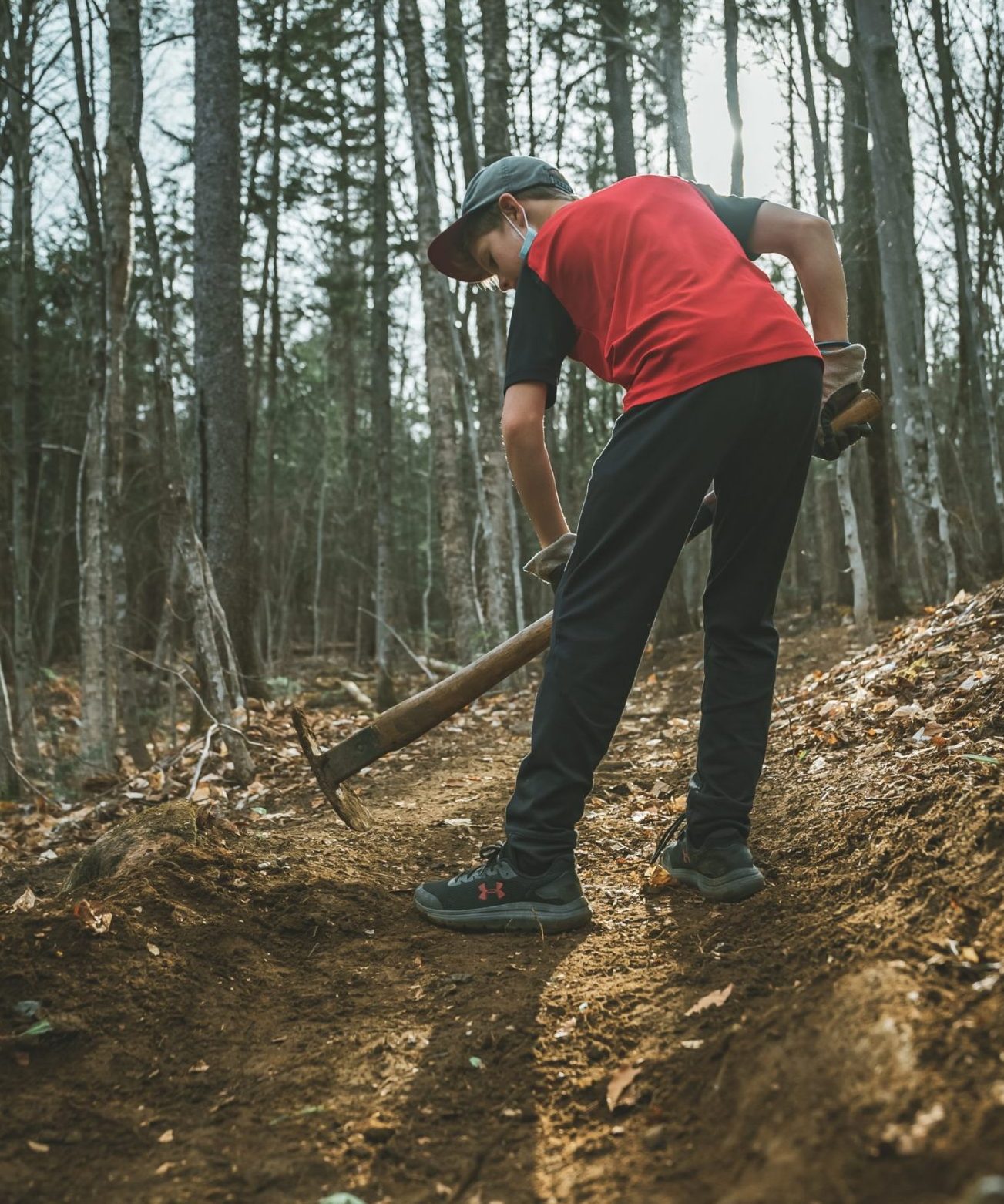
Teaching basic practices to new volunteers (Green) is essential. Leaders and Captains must explain, assign, and supervise tasks related to these fundamental aspects to ensure the creation of sustainable and safe trails. To improve task efficiency and enhance volunteers’ sense of accomplishment (which supports long-term retention), Leaders must always consider the abilities of the volunteers present, assigning tasks that match their skill level and experience. A Leader who prioritizes this crucial detail fosters a positive atmosphere in the woods, instilling pride and a sense of belonging in trail building. This, in turn, encourages volunteers to remain engaged in their community over the long term.”** Water Management & Erosion Prevention : Dozens of techniques help water drain quickly off the trail—such as outsloping, raised trail centers, parallel upstream channels, culverts, pipe installations, and water bars. However, explaining them all in detail would take too long here. Dig It relies on the collective knowledge of Leaders and Chapter Operators to ensure that these essential techniques are prioritized and taught consistently across all Chapters. A simple way to illustrate water flow is to “think like a golf ball rolling down the trail.” Imagining a golf ball’s trajectory makes it easier to visualize how water moves, its speed, and the impact of gravity on its path. This strong mental image helps newer trailbuilders grasp drainage principles quickly. Water should always “escape” the trail as often as possible, and proper trail design ensures this happens efficiently. Removing Unstable Objects : This duty is easy to implement and crucial for both safety and trail durability. Dead wood, rotten stumps, and loose rocks (aka Baby Heads) can shift unexpectedly, creating hazards for riders and hikers. Partially detached roots can increasing the risk of accidents. Clearing these elements ensures a more stable, predictable surface, improving both the longevity of the trail and the overall user experience. Removing Topsoil : Another fundamental technique is removing topsoil before shaping the trail surface. One of the most common mistakes made by inexperienced (or lazy) trailbuilders is using topsoil—the rich organic upper layer—to construct trails. This black dirt, humid moss, and loam contain high concentrations of organic matter and microorganisms, preventing the surface from becoming hard and stable. To avoid poor trail construction, always remove topsoil using a rake, rogue hoe, or shovel. Organic material is not sustainable, does not compact well, and softens when exposed to water. A good practice is to transport this material using buckets and dispose of it discreetly—behind boulders, between large rocks, or by spreading it evenly about 20 steps downhill from the trail. This ensures it won’t wash back onto the trail due to rain or wind. Bringing Experience & Creativity to Trail Building : Once these fundamental principles are in place, experienced trail builders can apply their creativity, knowledge, and personal style to refine the layout and add features. At this stage, builders adapt their techniques to the surrounding geology and natural resources, crafting durable, unique, and enjoyable trails. However, always ensure that the techniques used match the local ecosystem, as not all methods work in every environment. When in doubt, consult other Leaders or Chapter Operators to make informed decisions
The art of trail building is based on hundreds (or even thousands) of techniques. Each one applies to specific types of geology, but not all. On top of that, every trail builder has perfected their own technique and uses unique secrets to create incredible trail sections. However, 3 fundamental practices must be followed first to ensure trails are both sustainable and safe.
3 Basic Trail Maintenance Duties: